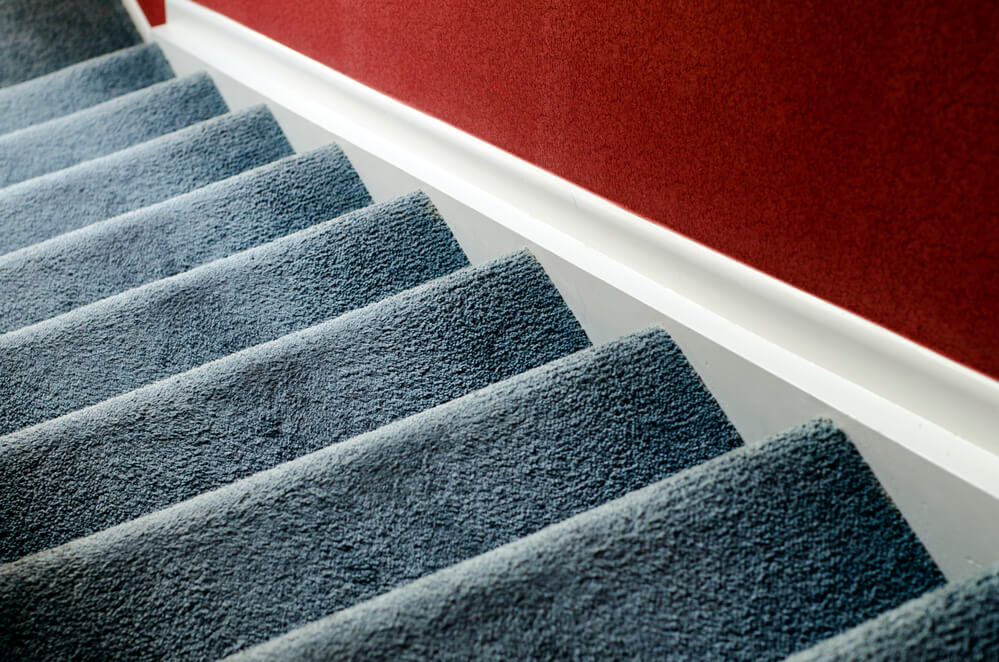Owning a home can be a troublesome experience. When I bought my new house, renovations were needed, and ugly old carpets had to come up. The flooring in the living room and bedrooms was a cinch- whatever looked nice. But, what about the basement? What type of flooring would work? Would wood mold and rot? Would stone get dirty and ugly?
According to FlooringtoCeiling, an experienced flooring renovationbusiness, a good rule of thumb for basement stairs is: moist basement, no wood or carpet, dry basement, go wood or carpet. Different basements built for different purposes will have different levels of moistness, insulation, and other factors, and different flooring options will work best for these settings.
In this article, we’ll go through the reasons for this rule of thumb and talk about why your dream shag might not work so well in your root cellar.
Different Stairs for Different Basements
Depending on when your home was built, the basement might have been designed for a different purpose than the one you have in mind.
Modern basements are often designed as recreation rooms, storage places, or places to keep heating elements. These basements are often well insulated, designed to be very dry, and have things like heating and cooling built-in.
Older basements were often used for more practical reasons such as cold storage for foodstuffs or liquids. They often have cracks in the walls, and might not even have heating. In these basements, temperatures will vary.
Flooring for Dryer, More Modern Basements
Basements in more modern homes are often built with living space in mind. They might include extra rooms or rec rooms and are more likely to keep a level of humidity and temperature more consistent with the rest of the house. For this reason, wood and carpet can be a good fit.
Wood
Wood is vulnerable to atmospheric conditions like humidity and temperature. Because of the conditions trees have to adapt to, it expands and contracts based on temperature, and has a high level of absorption.
Because of this, wood in more moist or unheated basements can crack, warp, and change over time. It is best placed in dry, heated, or cooled basements.
If you look around your basement and already see wood flooring, you can probably bet that wood will work. But have a closer look. If the wood is warped or jumbled up in any way, this is a sign of inconstant temperatures or humidity.
Carpet
If your basement has the look of a rec room or a living room, is heated, and has a dry, empty smell, carpet might be a good fit.
Carpeting has lots of fibers and collects moisture, which gives bacteria and other lifeforms a place to breed. This produces a mildewy smell in moist environments. In dry basements, carpet is right at home.
Carpet comes in a variety of colors and textures so you can build the feng shui you’ve been dreaming about.
Flooring for Older or More Humid Basements
The smell of mildew or mold is a good indicator that you’ll need to stay away from wood or carpet. A cold or hot temperature different from the rest of the house is also a no-go for wood. If the walls are concrete, lack insulation, or have cracks in them, these are all signs that you need something a little more utilitarian.
Concrete
Concrete may not be the prettiest flooring, but you work with what you’ve been given. Lots of basements come with concrete stairs, and they can be touched up in various ways to make the scene a little more welcoming or practical.
Placing adhesive strips of course material down on the steps can make them less slippery. Making your steps more even and placing down flooring options like these can greatly reduce accidents.
Concrete can also be painted. The disadvantage with this is that you constantly need to reapply paint, and courser concretes can look ugly underneath a paint job.
Tile
Tile is a durable substance that will hold up well in moist or inconstant conditions. It does not absorb water and retains its shape in different temperatures.
Depending on what kind of tile you buy, you can go for any look from utilitarian, to space-age, to luxury Roman. Tiles come in such styles as marble, granite, or even mock hardwood.
Tile can be slippery, however, so consider options like adhesives to increase traction on your steps. You’ll also want to make sure the tile is very even and level as you install it, so you can avoid accidents in the future.
All In All
The main takeaway from this article should be to consider the conditions in your basement and weigh your options accordingly. More humid basements should get more durable options like tile or concrete, and well-insulated basements can go for more fanciful options like wood and carpet.

